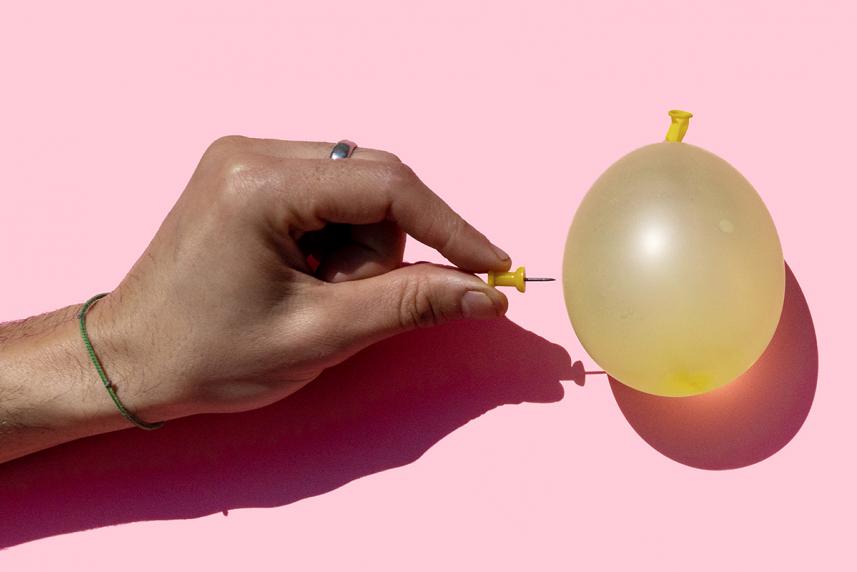Myths and truths about bladder leaks
Learning the facts about incontinence is the first step in treating it.

Do you have trouble making it to the bathroom in time, or struggle with leaks? You may have a bladder control problem, also known as urinary incontinence.
Many people feel awkward bringing it up with their doctor at all. Part of the stigma comes from commonly held misconceptions about bladder leaks. Here, we set the record straight and offer helpful tips for managing incontinence.
Myth: Bladder leaks are inevitable as we age.
While leaks can affect anyone at any age, they’re more common in older adults, according to the National Institute on Aging. But bladder leaks aren’t a normal part of aging. If you’re dealing with incontinence, it’s a good idea to visit your doctor. They can help develop a plan of action to keep you drier.
Myth: There’s no way to fix incontinence once you have it.
Fortunately, there are lots of different ways to ease incontinence. And medications, medical devices, and surgical procedures aren’t your only options. What you drink and eat, certain forms of exercise, and other daily habits may play a bigger role in easing symptoms of urinary incontinence than you think.
Need to see a specialist? Your plan allows you to see a specialist without a referral. However, your primary care provider might have helpful recommendations for you. Use our Find a Provider tool at ibxmedicare.com/providerfinder to locate in-network specialists.
Myth: Only women deal with incontinence.
It’s true that women are more likely than men to experience incontinence, according to the National Institute on Aging. One reason? Hormonal changes after menopause can lead to urinary incontinence. The condition affects over 50 percent of postmenopausal women, according to a 2019 review paper. But incontinence can happen to anyone, regardless of age or gender.
Myth: People with bladder leaks should drink less water.
While the idea is understandable, it’s important to resist the urge to cut way back on water if you’re dealing with an overactive bladder or other form of urinary incontinence. That only sets you up for an even bigger problem: dehydration.
Your body’s systems need plenty of water to work properly. What’s more, dehydration can lead to extremely concentrated urine, which may irritate the inner wall of your bladder and aggravate your symptoms, according to the National Association for Continence.
Your best bet is to sip small amounts of water throughout the day, rather than guzzling bigger glasses with your meals.
Tips to manage incontinence
- Do pelvic floor exercises (such as Kegels). The muscles you use to control your urinary flow can benefit from their own unique workout, known as Kegel exercises. They’re simple to do, and the payoff is a stronger pelvic floor. To do them, first familiarize yourself with the right muscles by stopping your urine flow in midstream. During any downtime (before bed, during a commercial break, even at a stoplight), imagine using those pelvic muscles to lift a marble. Do this for a count of three, relax for three counts, then repeat 10 times. Repeat the series three times each day.
- Be a picky drinker. Compounds in certain beverages can irritate the sensitive inner lining of the bladder and act as a diuretic, which is any substance that causes an increase in the passing of urine. The result? You may suddenly have a lot of urine in your bladder or feel bladder spasms. The biggest culprits are caffeine, alcohol, citrus juice, and carbonated drinks.
- If you smoke, take steps to quit. If you were looking for another good reason to stop smoking, this is it. Cigarette smoke is a bladder irritant. Plus, many smokers also develop a cough, which puts pressure on the pelvic muscles, increasing the chances of stress incontinence. For help quitting, the National Cancer Institute can connect you to resources in your state. Call 1-800-QUIT-NOW. Smokefree.gov also offers a free motivational text-messaging program, where you can register to receive daily messages for six to eight weeks.
- Train your bladder. Jot down the times you go to the bathroom, as well as any accidental leaks and strong urges to go. It’s also a good idea to make a note of what you were doing when the leak happened. Any calendar or notebook will do, but you can also download a printable bladder diary from the National Institute of Diabetes and Digestive and Kidney Diseases. After a few days, review your diary and find the shortest time period between bathroom trips. Add 15 minutes to that time and use it as your starting point. Let’s say your diary shows you head to the bathroom about every 45 minutes. As you begin your training, aim to go once an hour.



